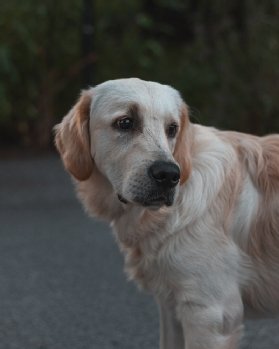
LIGHTFIELD STUDIOS - stock.adobe
Guide Dogs data strategy navigates path to organisational view
Guide Dogs CIO Gerard McGovern is mapping out a data strategy that is aimed at taking the charity from an individual to an organisational view of data
Guide Dogs is no different to other charities in needing to make better use of its donor data. But it also provides the service for which it mainly raises funds in the first place: dogs guiding blind or visually impaired humans.
Gerry McGovern, CIO of Guide Dogs, has been mapping out a data strategy in consultation with Caroline Carruthers, former chief data officer at Network Rail, now a consultant and CEO, Carruthers and Jackson. McGovern wants to move the charity from an individual view and practice of data management and analytics to an organisational one.
It is early days. If it were a mountaineering expedition, he says it’s at the stage where it has all the supplies and has a map of where it’s heading: “We’ve certainly started out, but I don’t think we’ve laid camp yet. So, we’re still on day one, but we definitely know where we’re going.”
Like many organisations, Guide Dogs had dispersed pockets of data activity. McGovern acknowledges that where Carruthers and her team have made the biggest difference is in shifting the focus away from very siloed, department-based pools of data.
“We had some of the best data people in the industry. They are really, really good, but their focus has always been about a singular view of data. There’s no point in us doing all this work if, at the end of it, we still think of data as split between departments, because you will only derive so much value doing that. The big difference is having really skilled professionals looking at things across the whole spectrum of the data that we have.”
The organisation has around 1,600 staff – 55 in IT and 20 or so colleagues with data as a major part of their jobs. It also has 15,000 volunteers, 250,000 database records and 2,500 dogs working hard for their human companions.
The organisation, whose full name is The Guide Dogs for the Blind Association, is not only about the guide dogs service. It campaigns for the rights of visually impaired people. And its children’s service runs a CustomEyes book programme for visually impaired children.
Like other charities – and McGovern has a background at the Great Ormond Street Hospital Children’s Charity – Guide Dogs wants to maximise income from donors, so its customer relationship management (CRM) system has that as a purpose.
Delving into dog data
But the charity also has dog data, much of which resides in a Salesforce database, but much of which is also in people’s heads, on paper, in spreadsheets, on whiteboards and so on. From January 2021, it is deploying an app built with the help of Salesforce so that staff who train the dogs can input data digitally and directly.
The charity is the largest breeder in the world of guide dogs – mostly Labradors, but with some German Shepherds and Labradoodles.

In any case, if Guide Dogs can, through sophisticated genomics data analysis, identify which dogs won’t make the grade, that would be an efficiency gain. McGovern characterises this as “hard data about soft data points”. Dogs that don’t make the cut are rehomed.
“If you can’t untrain a dog’s ability and propensity to chase cats, it’s going to be a rubbish guide dog,” he says. The charity already has a “dog behaviour monitoring tool” that indicates which dogs are likely to make it, but McGovern says “it would be great if we could overlay the genomics side to it”.
“We are the largest single breeder of guide dogs in the world, and we do have a very large database of breeding and the ability to track back. Every single dog that goes through our system is also on a paper file-based system. But it’s not as accurate as it could be. It’d be great if we could discover a single marker, as we become better with data analysis [that will predict success]. So, ‘big tongue’ equals ‘becomes great guide’ dog. But the only way you’re ever going to know that is if you pore through the data.”
He says the data specialists at Guide Dogs are already doing predictive analytics work, and are looking to machine learning (ML) models, harnessing the chatbot technology from the website, and so on. It is early days for much of that work.
Building on basics
Carruthers, whose team has been working with Guide Dogs since just before the pandemic – so, in an almost entirely remote manner – says the charity’s data strategy looks set to balance the data management basics with exploring what artificial intelligence (AI) can do.
“I think it needs to be said that when we talk about AI and ML and all the really sexy things that we love talking about, I think Guide Dogs is doing the right thing, which is to focus on getting the basics right. It’s a managed structure, where it is not falling into the trap of trying to fix everything, and so not doing any of the sexy stuff. It’s trying to balance the scale so that there’s enough of the basics that you can have a level of surety in the really interesting, sexy stuff.”
McGovern makes the point that all seasoned CIOs will make – that there are no such things as pure technology projects and that data management is where IT projects were in the late 1990s.

“When we talk about AI and ML and all the really sexy things that we love talking about, I think Guide Dogs is doing the right thing, which is to focus on getting the basics right”
Caroline Carruthers, consultant
“Back then, no one thought about what happens when we become larger. It was always siloed, always thinking about the here and now, not about how we’re going to be in a year’s time, five years’ time, 10 years’ time. We’ve nailed that when it comes to regular technology, and cloud services mean we can be incredibly scalable. We can react and we can change. But data is the next one now. We’ll probably use the same techniques we did for technology, but I think with data it’s a bit more difficult. You can swap out a laptop much easier than you can swap out a database.
“There aren’t any technology projects, there are only business organisational projects. I can’t do a project for technology’s sake, because if it’s not bringing benefits to the organisation, there’s no point doing it. And for all we can steer people in the right direction, it has to involve everyone, it has to be an organisation-wide project. If it was just a technology solution, it would be really easy.”
Nevertheless, there is a technology stack at the charity. It has a legacy CRM database that McGovern describes as “not designed for the modern world – it is not designed for digital services”. In particular, it wants to move to a model whereby donors, supporters and users of the service have control of their own data, can update their own details and so on, without the necessity for laborious manual processes at the Guide Dogs end.
As a Microsoft user, it uses PowerBI, he confirms, though its use of Salesforce does open it up to leveraging Tableau. And when it comes to building a data warehouse, it might be built on Microsoft Azure, but then it might not – that decision has not yet been made, he says. McGovern does, though, play tribute to the work Microsoft does for the UK’s third sector.
DRM – dog relationship management
In relation to canine data, Guide Dogs has what it jocosely calls a “dog relationship management” system, built on a Salesforce database. It wants to extend its use of Salesforce to the human side of the business.

“The most frustrating thing from my perspective is that once you have your data in an accessible format, doing the analysis is easy. It’s the preparation to get to that point [that is hard]”
Gerard McGovern, Guide Dogs
“Our ultimate ambition is a centralised management system for all requests that come into Guide Dogs, whether it be via telephone, text message, Alexa, whatever,” says McGovern. He reports that devices such as Amazon’s Alexa are “incredibly popular” with visually impaired people and that the guide dog owner’s manual is available that way.
“The most frustrating thing from my perspective – having been through this at Great Ormond Street – is, from a data perspective, once you have your data in an accessible format, doing the analysis is easy,” he says. “That’s where I could stick my programming hat on from when I used to write Java. I definitely won’t. We have people who are much better at coding than I am. But conceptually, I could. So, it’s not that the data science is that difficult, it’s the preparation to get to that point [that is hard].
“The worst thing about my job is having to say ‘no’ to people. But we will come to a point in time where I can’t say that anymore. And it will be a great point in time.”
Read more about data in charities
- HelpAge International, Oxfam get pro bono data expertise from DataKind.
- Charities warned over ‘Robin Hood’ cyber criminals.
- How big data brings big donations for charities.










